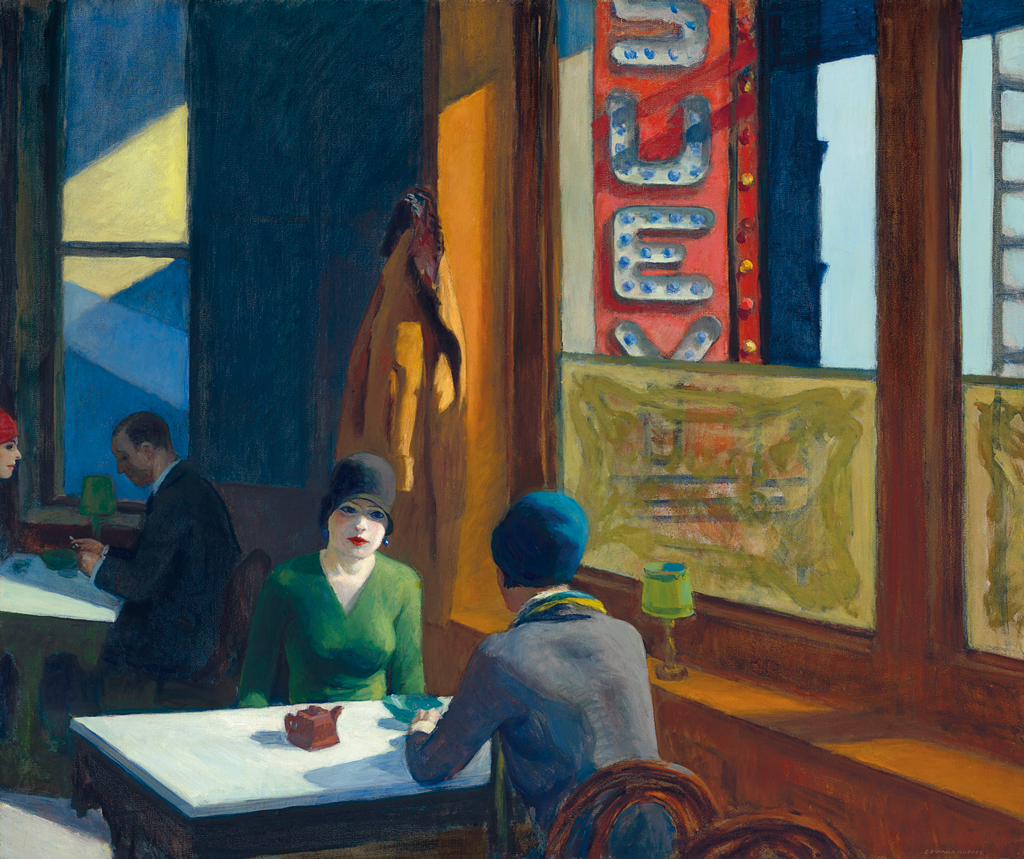[ad_1]
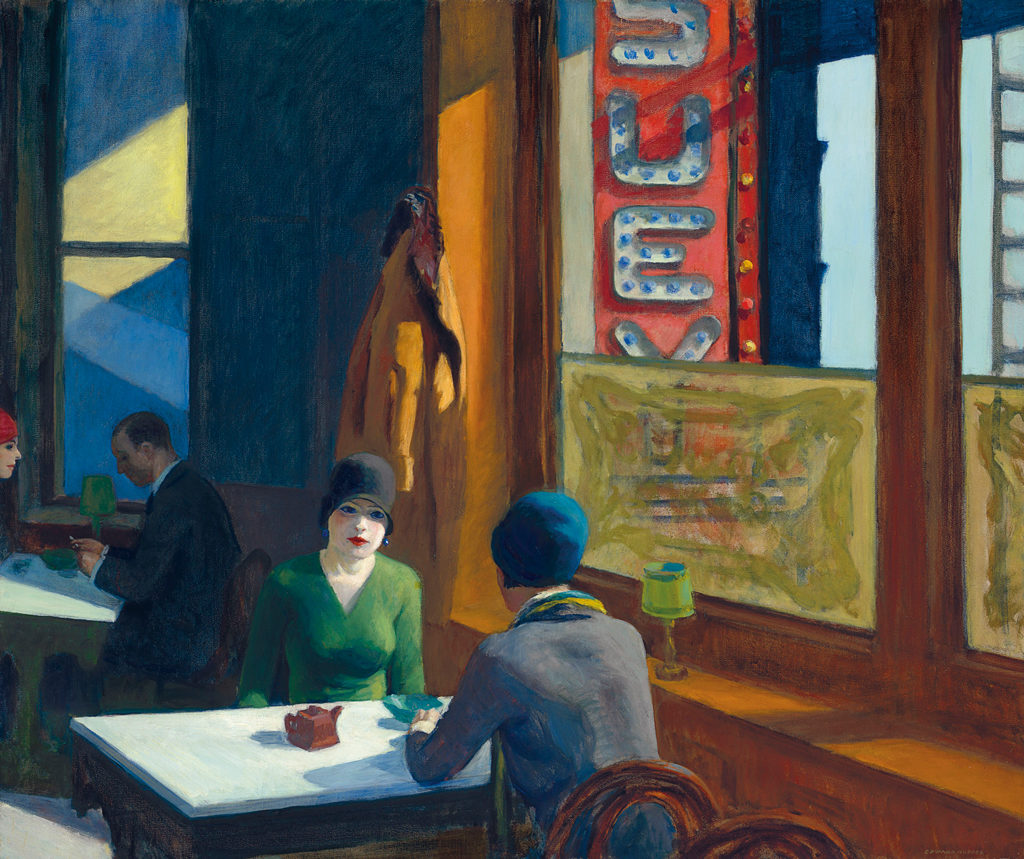
Edward Hopper, Chop Suey, 1929, sold for $91.9 million.
CHRISTIE’S IMAGES LTD. 2018
A highly anticipated single-owner sale of American modern art meticulously collected by the late Barney A. Ebsworth, a titan in the luxury travel business, fetched $317.8 million at Christie’s New York on Tuesday evening. The total tally, including fees, fell comfortably between presale expectations of $258.3 million to $360 million, a range that didn’t reflect tacked-on premiums.
The night included 13 artist records, among them one for Edward Hopper’s masterpiece Chop Suey (1929), whose sale price of $91.9 million—including the buyer’s premium—more than doubled the artist’s previous mark.
All of the 42 lots were backed either by Christie’s house guarantees or those of third parties who receive a financial incentive for the risk taken. The split was 34 lots backed by the auction house and eight by third-party backers. Five lots failed to sell, for a slim buy-in rate of 12 percent. Of the 37 lots sold, 20 went for more than $1 million; of those, six went for over $10 million and three exceeded $50 million. (All figures reported include the hammer price plus the buyer’s premium for each lot sold—12.5 percent for any amount above $4 million, 20 percent for the amount between $250,000 and $4 million, and 25 percent for the amount up to and including $250,000.)
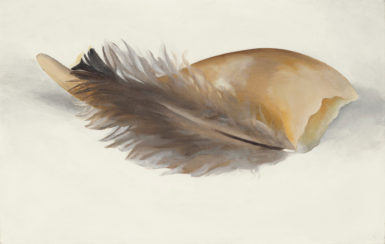
Georgia O’Keeffe, Horn and Feather, 1937, sold for $612,500.
CHRISTIE’S IMAGES LTD. 2018
The evening got off to a modest start with Georgia O’Keeffe’s eagle-eyed Horn and Feather (1937), a New Mexico still life in shades of white, beige, and gray with a feather seemingly embraced by a curved horn. It brought in $612,500 (below the estimate of $700,000-$1 million). In the second lot, another O’Keeffe—the powerful, richly realistic headshot portrait Beauford Delaney from 1942—sold for $372,500 (above the estimated $200,000–$300,000).
Ebsworth’s taste and uncanny feel for the kind of American Modernism championed by Alfred Stieglitz informed the evening’s cavalcade of stellar images, including Charles Sheeler’s crisply pristine and richly shadowed painting Cat-walk from 1947, which sold to a telephone bidder for $1.33 million (estimate $1.2 million–$1.8 million). Ebsworth acquired the Sheeler in 1978 for $65,000, according to Christie’s, through the American dealer Jay Maroney—an indication of the collector’s old-fashioned approach of hunting down the best through a carefully cultivated network of serious and trusted dealers.
“He knew what was good, better, and best,” veteran dealer Joan Washburn said in a Christie’s catalogue interview. “He did his homework . . . He did not haggle, he didn’t put you through the grinder, so if you had a major painting, you offered it to Barney first.”
Many of the works in the sale barnstormed the country nearly 20 years ago in the museum exhibition “Twentieth Century American Art: The Ebsworth Collection,” at the National Gallery of Art in Washington, D.C., and the Seattle Art Museum. One of those works, Alexander Calder’s 1943 Surrealist-influenced Hen sculpture in carved wood, wire, and paint, sold to the Swiss dealer Doris Ammann for $8.41 million (estimate $5 million–$7 million).
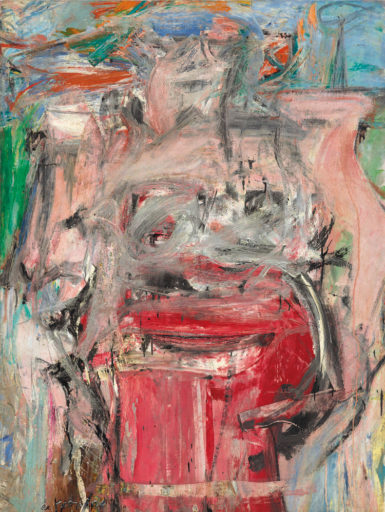
Willem de Kooning, Woman as Landscape, 1954–55, sold for $68.9 million.
CHRISTIE’S IMAGES LTD. 2018
It didn’t take long for the evening’s trophy lots to show some market muscle, as evidenced by Willem de Kooning’s sensational Woman as Landscape (1954–55), a riotously colored and pink-fleshed composition from the artist’s prime that raced to a record $68.9 million (estimate $60 million–$80 million). Ebsworth acquired the celebrated work from the comedian/actor Steve Martin in 1997, the year de Kooning died—and at a time when the artist’s auction record stood at $20.6 million. It was last exhibited in the 2016 “Abstract Expressionism” exhibition curated by David Anfam at the Royal Academy in London. And it seemed that two telephone bidders were vying for the work until the bidding hit $60 million—at which point Loic Gouzer, Christie’s co-chairman of post-war and contemporary art, apparently switched callers and took in the winning bid of $61 million (the hammer price before the premium).
Though smaller in scale than the de Kooning, Jackson Pollock’s intensely impastoed Composition with Red Strokes from 1950 also sold to Ammann for $55.4 million (estimate $50 million–$70 million). In oil, enamel, and aluminum paint, the work shows off Pollock’s inventive technique, inspired in part by Navajo sand painters but executed by way of poured and dripped mark-making on a supine canvas. Ebsworth acquired the work from the Jason McCoy Gallery in New York 1997 for $5 million, according to Christie’s. (McCoy is a nephew of Pollock, so it would be difficult to beat that trusty provenance.)
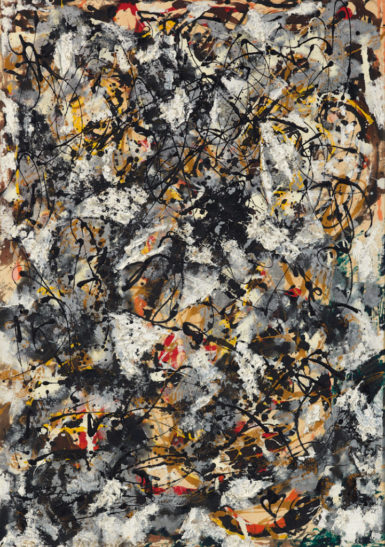
Jackson Pollock, Composition with Red Strokes, 1950, sold for $55.4 million.
CHRISTIE’S IMAGES LTD. 2018
But even with the behemoth names of de Kooning and Pollock in Ebsworth’s remarkable collection, it was Edward Hopper who generated the most heat with the sale of Chop Suey. Bidding opened at $50 million and trotted along through $5 million increments between two phone bidders until it hammered at $85 million. If you did the math by the buyer’s premium guide, the final price should have been $95.9 million—but, on the way to the final price of $91.9 million, Christie’s had to figure in and officially report the presence of a third-party bidder, who made a cool $4 million from the arrangement. If you’re scratching your head in confusion, welcome to the barely translucent world of big-time auction dealing.
Chop Suey—which Ebsworth acquired in 1973 from Madison Avenue dealer William Zierler for $190,000, according to Christie’s—is arguably the most important Hopper in private hands, a stunning picture of two women quietly absorbed in conversation in a sunlit Chinese restaurant that also affords an exterior view of the electric red sign of the establishment. Back inside, a less-lit table is occupied by a couple who seem lost in their own world, the dark-suited man smoking what must be an unfiltered cigarette. Some art historians and curators believe that the women depicted in then-fashionable helmet hats bear a likeness to Jo Hopper, Hopper’s wife, muse, and model.
Hopper’s previous auction record—for East Wind Over Weehawken (1934), which sold at Christie’s New York in 2013—was $40.5 million (against an estimate of $22 million–$28 million). That work was sold by the Pennsylvania Academy of Fine Arts in Philadelphia to benefit its acquisitions fund. Chop Suey, for its part, almost went to the Seattle Art Museum, an institution for which Ebsworth served for many years as a trustee and vice president. The collector pledged the painting to the museum in 2007, but after his death last April at age 83, his wife and daughter decided to sell it on the open market.
Ebsworth bought a second Hopper from Zierler, the watercolor Cottages from North Truro (1938), for $65,000 the same year he acquired Chop Suey. At Christie’s, it sold to Abigail Asher of Guggenheim Asher Associates for $3.49 million (estimate $2 million–$3 million). “It’s a beautiful object in a large sheet size and hard to find,” Asher said as she bounded out of the Rockefeller Center salesroom. “We were prepared to go much higher.”
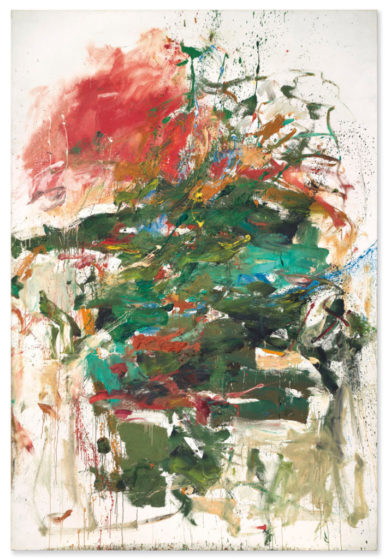
Joan Mitchell, 12 Hawks at 3 O’Clock, 1960, sold for $14 million.
CHRISTIE’S IMAGES LTD. 2018
In his 2012 autobiography A World of Possibility, Ebsworth wrote, “For me collecting art was about quality, quality, quality.” It certainly seems like he followed that mantra to acquire Joan Mitchell’s sublime large-scale 12 Hawks at 3 O’Clock (1960), which sold for $14 million (estimate $12 million–$16 million), and Jasper Johns’s Gray Rectangles (1957), a canvas with objects that sold to an anonymous telephone bidder for $21.1 million (estimate $18 million–$25 million). Ebsworth bought the Mitchell at Christie’s New York in 1997 for $310,000; the Johns he got at Sotheby’s in 1988 for $4.3 million from the collection of Victor and Sally Ganz.
Though the Ebsworth collection barely touched on Pop art, a doozy in the form of Claes Oldenburg’s plaster and enamel sculpture Strong Arm (1961) sold to the noted New York collectors Richard and Barbara Lane for $2.29 million (estimate $2 million–$3 million). “We have other works of his,” Richard Lane said of Oldenburg on his way out of the salesroom, “but we always wanted an early plaster.”
In lots marking more records, Arshile Gorky’s luscious early abstraction Good Afternoon, Mrs. Lincoln (1944) sold for $14 million (estimate $7 million–$9 million), and George Tooker’s A Game of Chess (1946-47) went for $432,500 (estimate $250,000–$350,000).
In a statement after the sale, Christie’s deputy chairman Eric Widing praised Ebsworth’s eye for works with staying power. “If he hadn’t been a travel entrepreneur,” Widing said, “he would have been a museum curator.”
The evening-auction action resumes at Sotheby’s contemporary art sale on Wednesday.
[ad_2]
Source link

